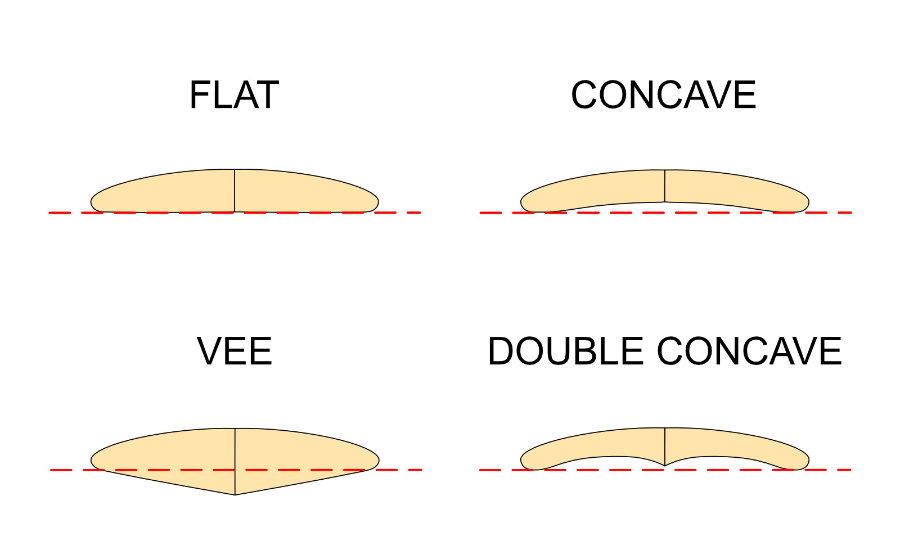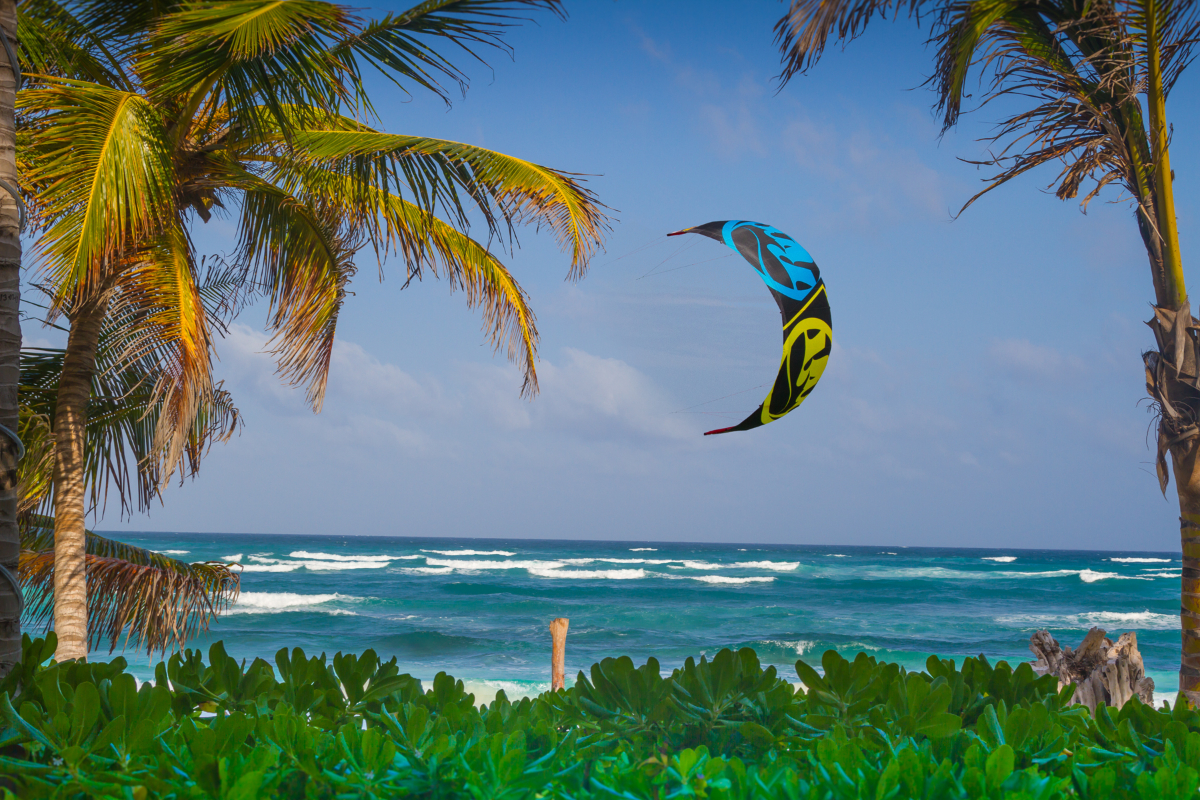Kitesurfing wave boards, do you want to give them a try?
Looking for your new kitesurf surfboard? Here some tips to make the best choice possible for you.

In the recent years wave boards have become mainstream in the kitesurfing world. At a certain point in the riding experience, we find ourselves dwelling with a simple yet not easy question: which surfboard should I buy?
Manufacturers have broadened the number of kitesurf surfboard models in their catalogs. Wave Kitesurfing Boards come in different lengths, shapes, and constructions. Sometimes, it is not easy to find your way around such a varied scenario. Some brands even propose up to 5-6 different models that, combined with the various construction material types, can bring a theoretical choice between 15/20 different combinations.
Then size comes into play, and at least 4 or 5 different board measures complicate the choice further.
While finding a wave kite for beginners or experts can be relatively straightforward (you can read the post on Kite Shapes to help you), finding the wave kiteboard that best suits your riding style requires a minimum of theoretical knowledge, especially if we want to avoid bad mistakes during the purchase.
Let's put together some information to choose the directional board that best suits our needs.
The types of construction.
-CLASSIC (very similar to a wave surfboard).
The core is made of polyurethane foam (lately of the more environmentally friendly prolapse polystyrene -PPS- or the cheaper, but more challenging to assemble, expanded polystyrene -EPS-), which gets resin-coated in polyester. Different types of materials with their densities determine the weight and strength. Classic built boards are the best choice for those who prefer the softness of surfing and a pure feeling with the wave.
-LTD (similar to windsurfing boards).
The core is made of polystyrene blended in epoxy resin. The construction tends to be more complex and time-consuming because the material is injected into non-preformed molds, having the shaper carve the shapes directly from the raw blocks. These boards are very appreciated by those kitesurfers who love greater control at high speeds.
-WOOD (the most resistant).
The boards are produced in one go by having the wood layers and fibers in the mold and by pouring the bonding epoxy resin from the tip to the tail. This leads to a reduction of the overall weight and a very high board resistance. These tend to offer a midway behavior between Classic boards and LTD models.

Classic or square shape
The shape for excellence is the "classic" one, with a rounded tip and more or less soft edges. This type of shape gives greater comfort during surfing, better ease of maneuver thanks to a better rail to rail passage, a pure surf style feeling.
Lately, however, more and more new kitesurf board models have shown almost square tips. These shapes provide superior control at high speeds, an exact and aggressive bottom turn. The downside is a more physically demanding cutback. The squared tip shape can also lead to smaller sizes than the corresponding classic model, rendering these boards very interesting for strapless freestyle.

The surfboards elements and characteristics.
A directional kitesurf board brings several parts that affect its performance. Every element influences the board's final behavior, and it is worth analyzing them all together.
LENGTH.
The most straightforward concept connected to the board shape: the longer the board, the more stable, the shorter, the more maneuverable.
OUTLINE.
The perimeter shape of the board. The Outline is the side curve that joins the bow to the stern, and during the construction phase, it helps determine the barycenter position (center of mass) of the kiteboard.
If it moves towards the bow, the board will have better floating and stability at low speeds. If the barycenter leans more to the back, the board will offer more stability at high speeds instead.

ROCKER
It's the board's side curvature from the nose to the tail. Often the surfboards, the nose rocker, and the tail rocker can have a different curvature or be the same. In that case, we are talking of continuous rocker.
This distinction is generally superfluous in kitesurfing wave boards due to the board's shorter dimension, making the rocker design lean to a more continuous style.
A flat rocker means more hull in contact with the water, granting a fast, stable board, a quick glide, an immediate start on the wave, better upwind capabilities.
A deeper rocker translates in a slow, unstable board, delayed glide, but excellent maneuverability, a better wave crossing when riding out, less tendency to sink from the bow.

HULL
The part of the board in contact with the water is crucial in determining certain behaviors: the main difference consists in planning or displacement hull. The first has a flat or concave surface and glides on top of the water lifting the tail with the increased speed, while the second, especially at high speeds, tends to sink the tail firmly in the water. Let's see in detail the main types of shapes:
Flat (planing hull): they are the most versatile, suitable for most waves and situations, fast even in small wave conditions, they do not cause maneuverability problems.
“V” or “VEE” (displacement hull): they facilitate the passage rail to rail, allowing to increase the maneuverability of even wider boards. The downside consists of a general loss of speed due to the shape's worse hydrodynamics.
Hybrids: Flat + V. Some manufacturers combine the 2 types of hulls, preferring the flat one over most of the length while inserting in the stern area a V-shaped section, right between the fins. This configuration has the advantage of minimizing the speed losses while still granting a firmer 'grip' on the water when maneuvering.
Concave (planing hull): to be really effective, they are usually best suited for high speeds. Concave hulls can be made of more than one flux channel to further increase the grip. These boards are generally very technical and are used primarily on extreme waves by professional riders.

DECK
It's the top of the board, and, like the Outline, the most significant influence is on the board's barycenter position.
NOSE
It is the shape of the bow. The nose is the part of the board that is least in contact with the water, depending on the rocker's shape.
Generally, boards with deeper rockers have very sharp noses, favoring the passage of front water splashes, improving the board's handling but diminishing the stability. Lower rocker (straighter) boards have more rounded noses with opposite effects.
RAILS
They are the edges of the table. Thick, round rails offer more maneuverability and more buoyancy. They are suitable for riders of low to medium level.
The more the rails become thin and sharp, the more penetration and grip on the wave. The cost is a diminished buoyancy since the water covers the deck as the critical glide speed drops, causing further drag and speed loss.

TAILS
The tail is the part of the board that is always in contact with the water. It affects handling and speed. Simplifying: narrow and aggressive tail ensures a faster transition between the 2 opposite edges and will hold the line better. On the contrary, wider ones give less maneuverability but will deliver stability, flotation, and speed.
There are different shapes on the market that follow more or less the wave surfboards fashion:
The Square Tail
The square tail or chop tail is the base of all designs. It's a high-volume tail shape that will plane fast across the water while offering a lot of stability.
It's an excellent shape for soft and slow waves. The square tail will react fast in short and tight turns.
The Round Tail
The round tail offers even more maneuverability and will provide enough hold in hollow and steep wave conditions. It is more comfortable side to side changes than the square tail, and the extra surface area will deliver a bit more speed.
The Swallow Tail
The swallow tail is a popular design for both small and high-performance short surfboards, therefore broadly implemented on surf kiteboards because it offers stability, control, and good grip when transitioning from rail to rail.

FLEX
The flex is related to the construction material and any reinforcements implemented during the construction phase.
A very flexible kiteboard gives the feeling of being soft, less reactive, and gentler to the wave. Since it reacts more slowly to the foot's impulse, it can be limiting for those who, having an aggressive and precise ride, need a fast and quick response from the kiteboard.
FINS
There are 3 (thruster) or 4 (quad) fin board models. The differences and nuances between these two configurations often raise endless discussions between kiters and even more between surfers.
Without going too deep, let's say that with 3 fins, the board is more reactive but less performing in the upwind.
A 4 fins board usually is more demanding in closing the curve but gives better stability in the upwind.
The fin shape itself could be the topic of a separate post. The main elements that influence the fin's behavior are width, height, thickness, rake, and flexibility (twist). Simplifying again, a thick, soft, and large fin will result more comfortable and easier during upwind, while small fins will give more speed and maneuverability.
Naturally, a surf kiteboard's design combines all the characteristics mentioned above, which need to be chosen and implemented organically. That's the role of professional board shapers, but analyzing the single details of the boards, will enable the kitesurfers to have a better understanding when purchasing their next wave board.

Mouse pad

Logo: Riding the wind surfing the waves
Promote your Kite School for free!
Index your Kite School in our database.
You will get free lifetime visibility on Kitesurf Culture website.
If you have a website, it will provide precious backlinks to improve your SEO ranking
Relevant Posts

8 Tips to buy used Kitesurfing Gear avoiding Bad Surprises

Do you really use the right kite shape for your riding style?

Kitesurf Line Length and Kite Behavior: Long or Short Lines?

The Kitesurf session ended: tips for Kite Gear Maintenance

How to Choose the Best Kitesurfing Equipment (Part Two)
Get free Kitesurfing Resources and Tips
If you like our content and you want to be informed on the next blogposts release, please subscribe here. That will also help us to continue to provide quality content:
Give us your opinion.
Men's Performance T-Shirt

Logo: Kitesurfing making gravity optional since 1977
Promote your Kite School for free!
Index your Kite School in our database.
You will get free lifetime visibility on Kitesurf Culture website.
If you have a website, it will provide precious backlinks to improve your SEO ranking
Relevant Posts

8 Tips to buy used Kitesurfing Gear avoiding Bad Surprises

Do you really use the right kite shape for your riding style?

Kitesurf Line Length and Kite Behavior: Long or Short Lines?

The Kitesurf session ended: tips for Kite Gear Maintenance

How to Choose the Best Kitesurfing Equipment (Part Two)
Men's Performance T-Shirt

Logo: Kitesurfing making gravity optional since 1977
Latest Posts

Kitesurfing Dubai: an honest guide. Tips, Spots & Winds

Unwind and learn: best beginner kitesurfing spots worldwide

Self-Rescue in Kitesurfing: A Crucial Guide to Safety

Kitesurf Ometepe: an Epic Kite Trip to Nicaragua

Kitesurfing Spring in Andalucia: Unexpectedly Great!